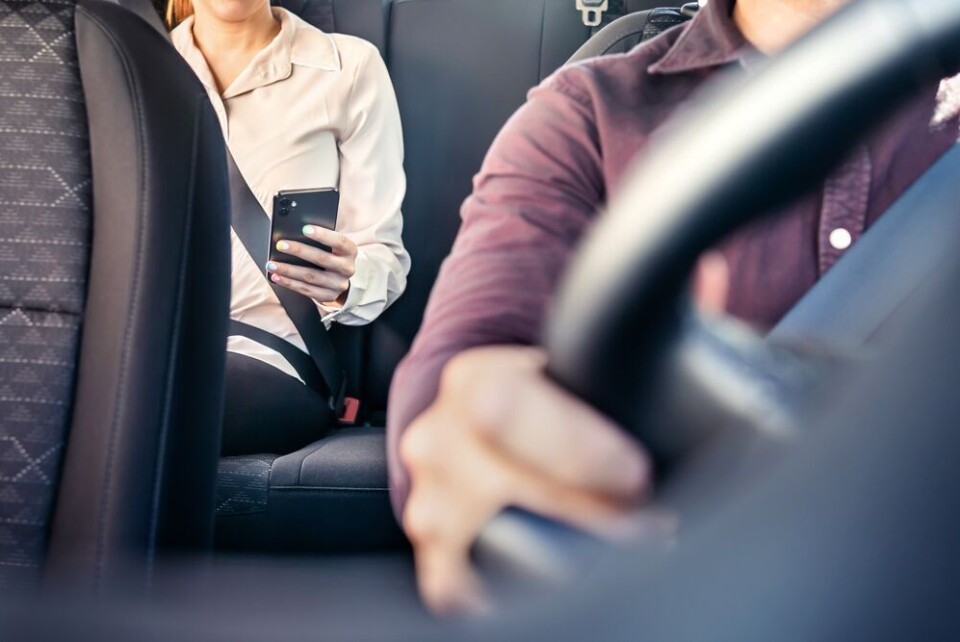-
Six good news stories from France in 2025
From revolutionary eye surgery and sporting successes, to successful fundraising for iconic French brands, the year was full of feel-good news
-
Why is New Year's Eve known as Réveillon de la Saint-Sylvestre in France?
You may have heard French friends use this term but they might not know where it comes from
-
French farmer protests: union calls for ‘mass restart’ of action
January 7 is highlighted as day for key action - other unions are yet to commit
Lone drivers now face fines for using carshare lane on French motorway
Police are issuing fines of up to €135 for people who break the rules

Drivers without passengers now face fines of up to €135 if they use the carshare lane on the A1 motorway in France, as the two-month introductory grace period comes to an end.
For the past two months (since September 4), police have been stopping drivers who misuse the lane, but not issuing fines.
This was purely to help ‘teach’ drivers about the new system. However, this period has now ended.
Since Monday, November 6, police from the CRS motorway force have been carrying out daily checks, and fining drivers who break the lane rule on the A1 between Dourges and Lille (Hauts-de-France).
“We've given users time to get to grips with the new regulations and the system,” said Frédéric Dubus, commander of the CRS Autoroute Nord-Pas-de-Calais to France Bleu. “But to know whether this experiment is working, with a real effect on traffic, and to adapt it if necessary, the rules have to be enforced.”
Read more: Lille launches scheme to pay drivers to leave car at home
Lozenge symbol
The aim of the carshare lane system is to reduce the number of cars on the road by encouraging people to share vehicles. It is thought that this will cut traffic in the Lille area, especially during the ‘rush hour’ of 06:30 to 09:00.
Use of the carshare lane is enforced by the CRS autoroutière Nord-Pas-de-Calais and the department road agency the DIR (le service départemental des routes) Nord.
When the carshare system is active - normally for the two busiest hours of the morning - the left-hand lane of the A1 is reserved for vehicles carrying more than one person (including the driver). Cars with a ‘zero’ Crit’Air rating, taxis, and emergency service vehicles are also allowed to use the lane.
The lane is indicated by a sign with a ‘lozenge’ symbol, displayed above the left-hand lane. Authorities can turn it on and off depending on traffic conditions.
When the system is on, HGVs must use the right-hand lane, and are not allowed to overtake. Other vehicles that are neither HGVs nor permitted to use the carshare lane must stay in the right-hand or middle lanes.
A police motorbike picks up drivers breaking the rule and instructs them to change lanes. A second motorbike is equipped with a camera, which films the vehicle and its number plate.
Later, the number plate is checked to be sure that the vehicle was not allowed - or, conversely, was allowed - to be in the lane. For example, electric vehicles are permitted even if they are only carrying the driver, because they have a zero Crit’Air rating.
If the vehicle is confirmed to have been in the wrong lane, the driver will be sent a fine for €135. This reduces to €90 if paid within 15 days. The fines are sent to the driver’s registered home address.
Thermal camera from next month
“Since the start of the week, we've been averaging 50 offences a day during the two hours that the carpool lane is active,” said Mr Dubus. “But in the near future we'll be helped by an automatic speed camera.”
This camera is set to be installed in December, and will take several infrared, thermal photos of each vehicle, to check how many people are inside.
“We'll be able to get the number plate, and with heat detection we'll be able to check how many people are in the vehicle,” said Mr Dubus. “So the guy who thinks he’s clever by putting a doll next to him in the passenger seat won't get through, because the camera will detect that he's alone.”
Related articles
Drivers to be given up to €100 to start car sharing in France
Car-sharers in France can get €100 bonus even if not new app users
Radars to catch drivers wrongly using car share lane on rise in France
























